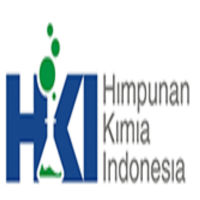SINTESIS DAN KARAKTERISTIK BATANG TANAMAN RUBIK (CALOTROPIS GIGANTEA) SEBAGAI MATRIKS PLASTIK BIODEGRADABLE
Abstract
Keywords
Full Text:
PDFReferences
Dewanti-hariyadi, Ratih, and Winiati P Rahayu. (2014). “Kajian Standar Cemaran Mikroba Dalam Pangan Di Indonesia.†Food Microbiological Standard in Indonesia: 113–23.
Irwan, Azidi, and Annisa Syabatini. (2013). “Polimer Superabsorben Berbasis Akrilamida (AAM) Tercangkok Pati Bonggol Pisang (Musa Paradisiaca).†Prosiding Semirata FMIPA Universitas Lampung: 45–54.
Kandungan Senyawa Aktif Tanaman Rubik.
Piasecki, Andrzej, and Alexandra Mayhew. (2000). “Synthesis and Surface Properties of Chemodegradable Anionic Surfactants: Diastereomeric (2-N-Alkyl-1,3-Dioxan-5-Yl) Sulfates with Monovalent Counter-Ions.†Journal of Surfactants and Detergents 3(1): 59–65.
Seguchi, Tadao et al. (2011). “Degradation Mechanisms of Cable Insulation Materials during Radiation-Thermal Ageing in Radiation Environment.†Radiation Physics and Chemistry 80(2): 268–73.
Tang, S. H. et al. (2006). “Design and Thermal Analysis of Plastic Injection Mould.†Journal of Materials Processing Technology 171(2): 259–67.
Wang, Yichen et al. (2015). “Rubik.†In Proceedings of the 21th ACM SIGKDD International Conference on Knowledge Discovery and Data Mining - KDD ’15, 1265–74.
Wirjosentono, B. (1995). Analisa dan Karakteristik Polimer,USU Press. Medan.
“www.theplantlist.org/tpl1.1/record/kew-2693661.â€
Yusnita, Hamtah, Wan M.Wan Aida, Mohamad Y. Maskat, and Abdullah Aminah. (2007). “Processing Performance of Coated Chicken Wings as Affected by Wheat, Rice and Sago Flours Using Response Surface Methodology.†International Journal of Food Science and Technology 42(5): 535–42.
БоÑак Ð’.З., Вакулюк П.Ð’., Бурбак Ð.Ф., ІÑаєв С.Д., Клименко Ð.С. (2007). 11 Доповіді Ðаціональної Ðкадемії Ðаук України 11 • 2007.
DOI: http://dx.doi.org/10.22373/lj.v6i1.3172
Refbacks
- There are currently no refbacks.
Copyright (c) 2018 khairun nisah

This work is licensed under a Creative Commons Attribution 4.0 International License.
INDEXED IN

